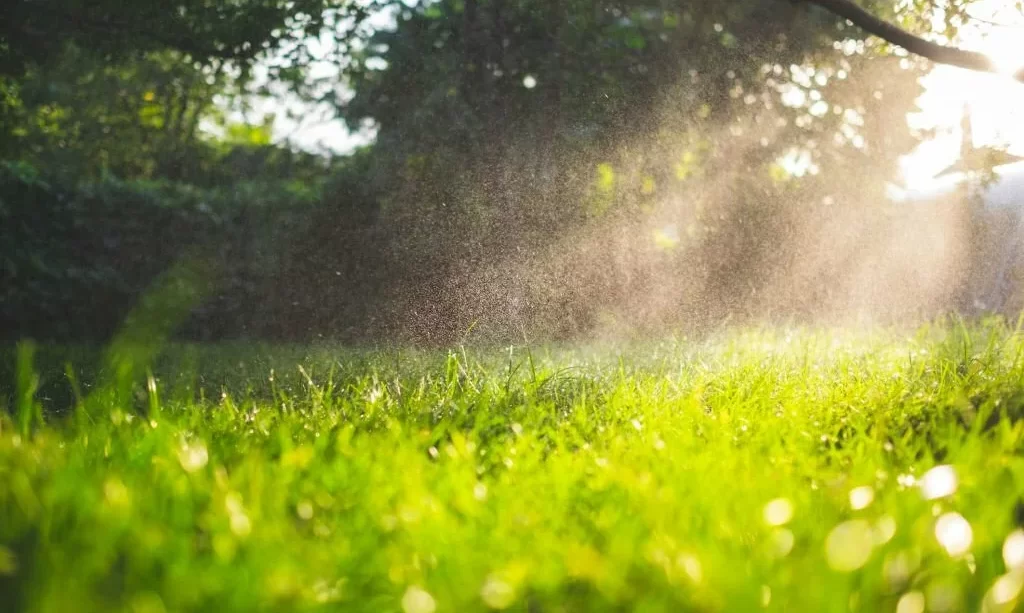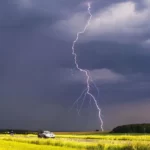The beauty of a lush, green lawn is a sight to behold, and for many homeowners, maintaining this natural carpet of greenery is a source of pride. However, the world of lawn care is riddled with myths and misconceptions, one of the most prevalent being the belief that watering grass in the sun can lead to lawn damage, often referred to as “watering burn”. The fear is that sunlight passing through water droplets may act like tiny magnifying lenses, causing burns or brown spots on your lawn. This common belief has sparked questions and debates among lawn enthusiasts, making it crucial to explore the science behind this notion and separate fact from fiction. In this article, we embark on a journey to understand whether watering grass in the sun can genuinely harm your lawn or if there’s more to this story than meets the eye.
The Science of Watering Lawns
At the heart of understanding the impact of watering grass in the sun is a grasp of the science of lawn care. Lawns, like all plants, depend on water for their survival and growth. Water serves multiple essential functions in the life of grass, making it a fundamental element of healthy lawns.
One of the critical roles of water in lawn care is as a vehicle for transporting nutrients and minerals from the soil to the grass blades. This process is vital for the growth and vitality of the grass. Additionally, water is essential for photosynthesis, the miraculous mechanism by which plants convert sunlight into energy. The leaves of grass are responsible for capturing sunlight and using it to create the energy needed for growth, which ultimately results in the lush green appearance we all desire in our lawns.
Moreover, water acts as a natural cooling mechanism for grass during hot weather. When the sun’s rays become intense, the grass has its way of coping. By transpiring, grass releases water vapor, cooling itself and maintaining its overall health. This cooling process helps grass withstand even the most scorching of summer days.
These fundamental principles of lawn care set the stage for understanding the complex relationship between water, sunlight, and the health of your grass. To explore the concept of “watering burn” and its scientific validity, we need to consider how these elements interact and whether sunlight passing through water droplets can genuinely harm your lawn.
The “Watering Burn” Myth
The idea of “watering burn” is a myth that has circulated in the world of lawn care for quite some time. According to this myth, when you water your grass in direct sunlight, the water droplets on the grass blades can act as tiny lenses. Sunlight passing through these droplets supposedly focuses like a magnifying glass on the grass, leading to burns or brown spots. This concept has created concern among homeowners, often causing them to avoid watering their lawns during sunny periods, even on the hottest summer days.
The “watering burn” myth has led to misconceptions about when and how to water lawns. Many people believe that the best time to water is in the early morning or late afternoon, avoiding direct sunlight. However, it’s essential to examine this myth from a scientific perspective to determine whether there is any truth to it or if it is indeed a misconception.
The Truth About Watering Grass in the Sun
So, what is the scientific perspective on the myth of “watering burn”? Does the magnifying effect of water droplets in sunlight genuinely pose a threat to your lawn? The answer is more straightforward than the myth suggests.
While the concept of water droplets acting as magnifying lenses may seem plausible in theory, the reality is that the sunlight passing through water droplets doesn’t focus intensely enough to cause burns or damage to grass blades. This is due to the fact that the sunlight’s intensity is dispersed as it passes through the droplets, much like how light refracts when passing through a prism.
In typical watering scenarios, the intensity of the sunlight is not concentrated enough to cause any harm to your lawn. The scientific consensus is that the risk of “watering burn” is minimal and that the benefits of watering, especially during hot, sunny periods, outweigh any potential risks.
In fact, watering your lawn during sunny weather can have positive effects. It can help cool the grass, reducing the risk of heat stress, which is a common issue during scorching summer days. Proper watering not only provides the necessary moisture for grass but also aids in maintaining the overall health and vibrancy of your lawn.
Best Practices for Watering Lawns
While the myth of “watering burn” has been dispelled, it’s important to focus on best practices for watering lawns to ensure the health and vibrancy of your grass:
- Deep and Infrequent Watering: One of the fundamental principles of effective lawn care is to water deeply but less frequently. This encourages your grass to develop deep roots, making it more resilient during dry spells. Light, frequent watering can lead to shallow root systems, making your lawn more susceptible to drought stress.
- Early Morning Watering: While watering in direct sunlight isn’t harmful, early morning watering is often recommended. This is because the morning hours tend to be cooler, reducing water loss due to evaporation. Watering in the early morning also gives your grass ample time to dry, reducing the risk of fungal diseases.
- Adequate Coverage: Ensure that your sprinkler system or hose evenly covers the entire lawn. Proper coverage helps prevent areas from becoming overwatered or underwatered.
- Observe Your Lawn: Pay attention to the specific needs of your lawn. Factors such as soil type, grass variety, and local climate can influence how much and how often you should water. Regular observation allows you to adjust your watering practices accordingly.
Special Considerations and Concerns
While “watering burn” is a myth, there are some special considerations and concerns related to lawn care:
- Overwatering: Overwatering, especially in humid regions, can be a real concern. It can lead to waterlogged soil, root rot, and an environment conducive to fungal diseases. It’s crucial to strike the right balance between providing adequate moisture and avoiding excess.
- Watering at Night: Watering your lawn at night is generally discouraged, as it can lead to prolonged periods of high humidity, increasing the risk of fungal diseases. Morning remains the most recommended time for watering your lawn.
- Local Climate and Soil: Consider your local climate and soil conditions. These factors can vary significantly from one region to another, influencing your lawn’s specific needs. Understanding your local environment is key to successful lawn care.
Conclusion
The myth of “watering burn” has been debunked, and the scientific perspective on watering grass in the sun is clear: it does not harm your lawn. Water droplets do not act as magnifying glasses focusing sunlight to the point of causing damage. In fact, proper watering during sunny periods can have beneficial effects by cooling your grass and reducing heat stress.
The key to a healthy, vibrant lawn lies in adopting best practices for watering, such as deep and infrequent watering, early morning watering, and ensuring even coverage. It’s also essential to consider your lawn’s unique needs, the local climate, and soil conditions.
So, don’t let the myth of “watering burn” deter you from maintaining a beautiful lawn. With the right knowledge and practices, you can enjoy a green and thriving landscape that enhances the beauty of your home and provides a welcoming outdoor space for relaxation and recreation.




